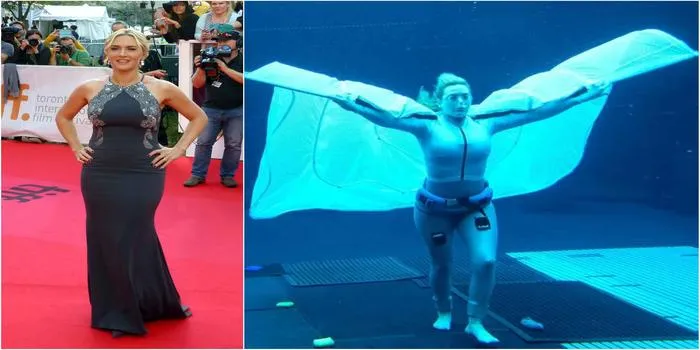The science of holding your breath: How could Kate Winslet stay underwater for over 7 minutes in Avatar 2?
The art of breath-holding combines physical training, mental discipline, and understanding of human physiology. In "Avatar 2," Kate Winslet's remarkable underwater endurance showcases advanced techniques, including slow breathing and relaxation methods that enhance lung capacity and oxygen efficiency. Meanwhile, the story behind iconic city nicknames, like "The Big Apple" for New York, reveals cultural, historical, and social influences that shape urban identities. Each nickname tells a unique tale, reflecting the essence and character of its city.

The Physiology of Breath-Holding
Holding your breath is a fascinating physiological feat that involves several bodily systems working in harmony. When you hold your breath, your body enters a state known as apnea, where the normal breathing process is temporarily suspended. This process engages various systems, including the respiratory, cardiovascular, and nervous systems.
During apnea, the body begins to utilize oxygen stored in the bloodstream and muscles. The more efficient your body is in using this oxygen, the longer you can hold your breath. Factors influencing breath-holding capabilities include physical fitness, lung capacity, and mental state.
Kate Winslet’s Underwater Feat
In the film Avatar 2, actress Kate Winslet astounded audiences by holding her breath for over 7 minutes while filming underwater scenes. This remarkable achievement can be attributed to rigorous training, both physical and mental, as well as an understanding of the science behind breath-holding.
Winslet undertook extensive training to prepare for her role, which included learning techniques used by free divers. Free diving, or breath-hold diving, is a sport where participants dive without the use of breathing apparatus. It emphasizes relaxation, proper technique, and efficient use of oxygen, all of which played a role in her breath-holding success.
Key Factors Influencing Breath-Holding Ability
Several factors contribute to an individual's ability to hold their breath for extended periods:
| Factor | Description |
|---|---|
| Lung Capacity | A larger lung capacity allows for more oxygen intake, essential for prolonged breath-holding. |
| Physical Fitness | Cardiovascular fitness enhances overall oxygen utilization, enabling longer durations of apnea. |
| Mental State | A calm and focused mind can significantly increase the ability to hold one’s breath. |
| Training | Techniques from free diving and practices like yoga can enhance breath control and capacity. |
| Adaptation | Regular practice can lead to physiological adaptations that improve breath-holding abilities. |
Understanding Oxygen and Carbon Dioxide Levels
During breath-holding, the levels of oxygen (O2) and carbon dioxide (CO2) in the blood change significantly. Initially, the body uses oxygen, and CO2 levels begin to rise. This buildup of CO2 is what ultimately triggers the urge to breathe. Understanding this mechanism is crucial for extending breath-holding times.
As CO2 levels increase, the body experiences discomfort, but trained individuals like Winslet can learn to tolerate higher levels of CO2 without succumbing to the urge to breathe. Techniques such as hyperventilation before a dive can temporarily lower CO2 levels, allowing for longer breath-holding; however, this method also requires careful management to avoid risks such as shallow water blackout.
Free Diving Techniques
Kate Winslet’s ability to hold her breath can be attributed to various free diving techniques that athletes employ to maximize their underwater endurance:
- Static Apnea: This involves holding the breath while remaining still, helping the diver to relax and conserve energy.
- Diving Reflex: The body's natural response to being submerged in water, which includes slowing the heart rate and redirecting blood flow to vital organs.
- Breath Control Exercises: Training involves practicing inhalation and exhalation techniques to enhance lung efficiency.
Training Regimens for Extended Breath-Holding
To achieve extraordinary breath-holding times, athletes and actors alike engage in specific training regimens. Here’s a breakdown of effective practices:
| Training Type | Description |
|---|---|
| Cardiovascular Training | Activities like running or swimming enhance overall lung capacity and oxygen efficiency. |
| Yoga and Meditation | Helps in developing mental focus and control over breathing patterns. |
| Pool Training | Practicing breath-holding in a controlled environment to build confidence and technique. |
Conclusion
Kate Winslet's remarkable achievement of holding her breath for over 7 minutes in Avatar 2 is a testament to the incredible potential of the human body when trained properly. By understanding the science behind breath-holding, incorporating effective training techniques, and optimizing physical and mental readiness, individuals can significantly enhance their breath-holding capabilities. This fascinating interplay of physiology and training showcases not only the limits of human endurance but also the art of film-making that brings such extraordinary feats to the big screen.












